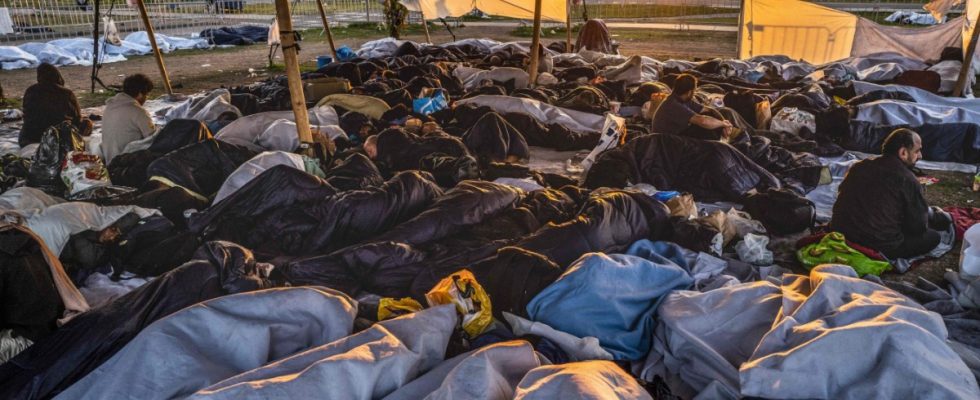Migration, migration, migration. For many months, the political discussion in the Netherlands has primarily revolved around this topic. Shortly before the November election, it became so dominant that it contributed to the resounding victory of the parties committed to restricting immigration. Above all, Geert Wilders’ right-wing nationalist, extremely anti-migrant Freedom Party.
The fact that something really needs to be done so that fewer people come into the country – if necessary by leaving EU politics – this wish is also the common basis of the four parties that are currently negotiating a government coalition.
This mood is now bursting the report of a high-profile independent group of experts, who has thought about the development of the population until 2050 and its possible consequences. At first glance, the conclusion of the State Commission for Demography provides a lot of grist for the mill of migration critics: In order for the Netherlands to remain livable, immigration must be limited. This is how the approximately 400 pages of the study can be summarized, and this is how it is received in many media. In detail, the report provides a picture with more nuances.
Such expert reports traditionally play an important role in the Netherlands; Politicians and the population are strongly guided by them. The government commissioned the commission in mid-2022. This mainly includes scientists, such as the well-known sociologist Paul Scheffer, but also former politicians. Their approach aims not to simply let population development happen, but to intervene. To do this, the Commission outlines scenarios and provides instructions to clarify where and how politics could and should take action.
Experts believe that moderate growth would be best
Statisticians expect the population to grow from the current 18 million to around 20 million people by 2050. The Commission also favors this “moderate growth”. Significantly fewer people would be bad for the economy, she says. Stronger growth, up to 22.8 million, would also be bad. The commission finds that this causes “shortages, inconveniences and annoyances”. It would no longer be possible to provide everyone with sufficient education, health care or just housing. Social inequality would increase, which could damage the rule of law and reduce the sense of solidarity in society. In addition, the environment suffers.
The possibility of such strong growth is “definitely there,” commission chairman Richard van Zwol told the newspaper NRC Handelsblad. Politicians can do something to prevent it. Promote housing construction, for example, but also limit immigration to a net 50,000 people per year. Above all, labor migration could be reduced, for example by banning the bringing of low-paid workers from EU countries to the Netherlands for low-wage jobs. As far as asylum seekers are concerned (around twelve percent of immigrants), the Commission sees the EU on the right track with its asylum reform. If necessary, the Netherlands would have to ask for exceptions to its migration policy.
More deaths than births, but the population is increasing
The population size is discussed more intensively in the Netherlands than elsewhere. As in most European countries, the average age is rising and the population is aging: the number of births has long been lower than the number of deaths. On the other hand, the Netherlands is one of the countries with the fastest growing population. Only Switzerland is growing faster in relative terms, Germany has more or less stagnated since reunification.
In the Netherlands this is entirely due to immigration. At the same time, with 522 inhabitants per square kilometer, they are one of the most densely populated countries in the world – the EU average is 109 people. This all contributes to the widespread perception that the country is too “crowded.”
The commission report primarily supports the line of politicians like Pieter Omtzigt (New Social Contract), who wants to cap net immigration at just 50,000 per year. Wilders, on the other hand, can only be cautiously happy about this; after all, he wants to bring the influx to zero immediately. Both are currently exploring the possibility of government cooperation together with Dilan Yeşilgöz from the right-wing liberal VVD and Caroline van der Plas (Farmer Citizens Movement).
Contrary to the wishes of these four parties, a surprise majority was formed on Tuesday in favor of a proposed law in the area of migration that has been debated for months. The VVD senators in the First Chamber, the upper house, agreed to vote for the so-called distribution law.
It is intended to ensure that asylum seekers are distributed more fairly throughout the country in the future. So far they are concentrated in a few reception centers, especially in Ter Apel in the north. Hundreds of migrants had to sleep outdoors there in 2022. According to the distribution law, cities should voluntarily make offers to take in asylum seekers, but can also be obliged to do so if necessary. Right-wing parties in particular vehemently reject the “compulsory law”; they argue it will lead to even more immigration.
The second chamber, the lower house, had passed the law proposed by a VVD state secretary shortly before the election. After the election, VVD leader Yeşilgöz, of all people, tried to stop it. Ultimately, the election results have to be taken into account, she said. The move by the VVD senators is a bitter blow that damages the authority of the chairmen in the party.

